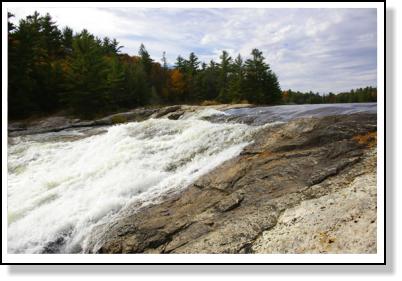 Safety
in the Outdoors Safety
in the Outdoors“The Invisible Nasties in Water” By Justin Hoffman We’ve all been guilty of taking a sip of water from a clear-as-can-be stream while wading for trout, splashing lake water on the face after a long hike, or taking a cannonball off the end of a buddy’s dock, usually resulting in laughter and a mouthful of water. These are innocent enough actions, yet they can cause pain and misery – and it can all be blamed on microscopic parasites.  They wait silently in lakes, rivers, streams, and ponds, ready to infect
any human or animal that comes in contact with them. According to Health
Canada, the most common pathogens we’re likely to encounter in the
outdoors are giardia and cryptosporidium. They wait silently in lakes, rivers, streams, and ponds, ready to infect
any human or animal that comes in contact with them. According to Health
Canada, the most common pathogens we’re likely to encounter in the
outdoors are giardia and cryptosporidium. Giardiasis or Beaver Fever Beaver fever is a stomach infection caused by microscopic disease-carrying parasites that are spread through a water system by feces of infected animals, with the most common being beavers, muskrat, deer, and coyotes. Humans are another significant carrier. Giardia is the most commonly reported intestinal parasite in the world. The mobile form propels itself with eight whip-like tails or flagella. The parasite is tiny. More than 15,000 can fit on the head of a pin. There’s also an active amoeba-like form of giardia called a trophozoite. It will attach to the walls of the intestine and feed off the host. Once it makes its way further down the digestive track, it encases itself in a cyst to ensure survival upon being passed from the body. During bad cases of infection, the human body might excrete hundreds of millions of cysts per day. This is the reason that using proper washroom facilities is imperative in order to prevent further spread of the disease. Whichever form giardia takes in entering our bodies, the cyst is what causes major problems, and unfortunately it only takes10 giardia to bring on the dreaded beaver-fever disease. Symptoms include chronic diarrhea, abdominal cramps and bloating, frequent passing of loose, pale stools, and fatigue and weight loss. Complications such as arthritis and damage to the cells that line the intestine can arise from prolonged infection. Cryptosporidium Cryptosporidium parasites are similar to giardia, but cause a diarrheal disease called cryptosporidious or crypto for short. The root cause of this is cattle feces, yet humans and other animals are also responsible for transmitting it. Infection will usually be in the small intestine, although it can be in other areas of the digestive or respiratory tracts. Symptoms appear within two to 10 days, with seven days being average. Once the parasite takes hold, signs of infection are diarrhea, dehydration, weight loss, stomach cramps, fever, nausea, and vomiting. Symptoms usually last one to two weeks. Preventative Measures Giardiasis and cryptosporidium are transmitted in similar ways. The most common are direct or indirect contact with water (drinking, swimming, or bathing), eating off or using utensils and plates that have been washed with infected water, or eating food that’s been rinsed with diseased liquid. Health Canada says removal and inactivation of giardia cysts and cryptosporidium oocysts from raw water are complicated by their small size and resistance to commonly used oxidants such as chlorine. Boiling and filtration are recommended. When drinking water from an unknown source in the outdoors, make sure to boil it first for at least one minute, or if above 2,500 yards in elevation, two minutes minimum. Only boiled water should be used for drinking, brushing teeth, washing fruit and vegetables, and rinsing dishes, glasses, and cutlery. Lynn Cox, proprietor of Canoe Frontier Expeditions and Brook Trout Adventures based out of Pickle Lake, offers this advice: “Boiling water for tea and coffee and for cooking works for us. If we encounter poor-tasting water or debris, we boil first and then use a filtration system.” Portable filters are convenient for treating outdoor water. In most cases, a small hand pump is used to pass water through filters that remove micro-organisms. Most filters use either activated charcoal or extremely fine ceramic mesh, some in conjunction with iodine, to remove viruses. For Ontario waters, in order to trap any cysts present, filters should have a pore size of 0.5 microns or smaller. To ensure the highest degree of removal percentages when choosing a filter, look for an “absolute” style, as opposed to a “nominal” one.
Water is a necessity of life, but it can come at a risk. To ensure you have a fun-filled and disease-free time in the great outdoors, practice healthy routines when drinking, swimming, and washing up.
In This Issue
Night-Bite Winter Crappie
The Invisible Nasties
in Water
Outwitting Whitefish On Ice
Spring Fishing and
Boat Show Get North! Stressed? need a vacation? -Visit Get North to find your Northern Ontario get-away! Fishing Lodge Classifieds -Come fish your heart out at one of these many Lodges, Camps and Resorts. Archived Articles - Click here to see articles from past E-Magazines
|

